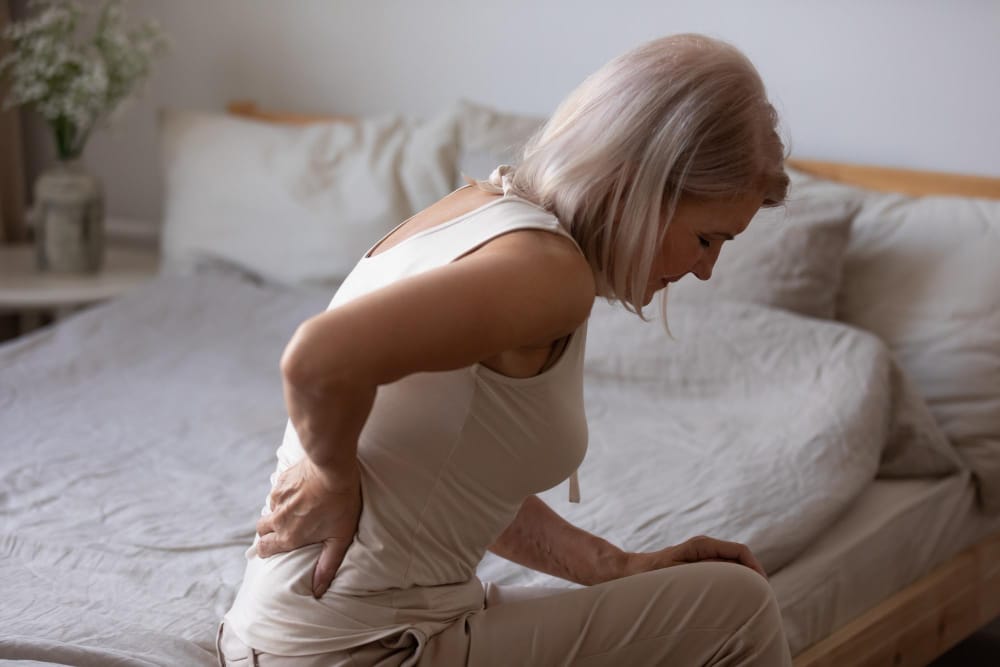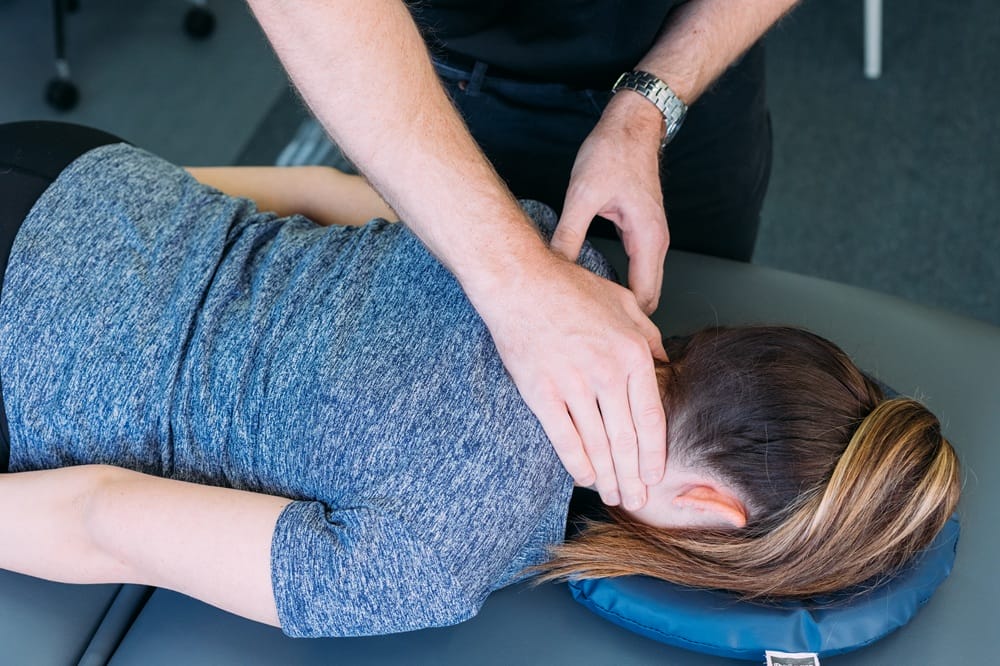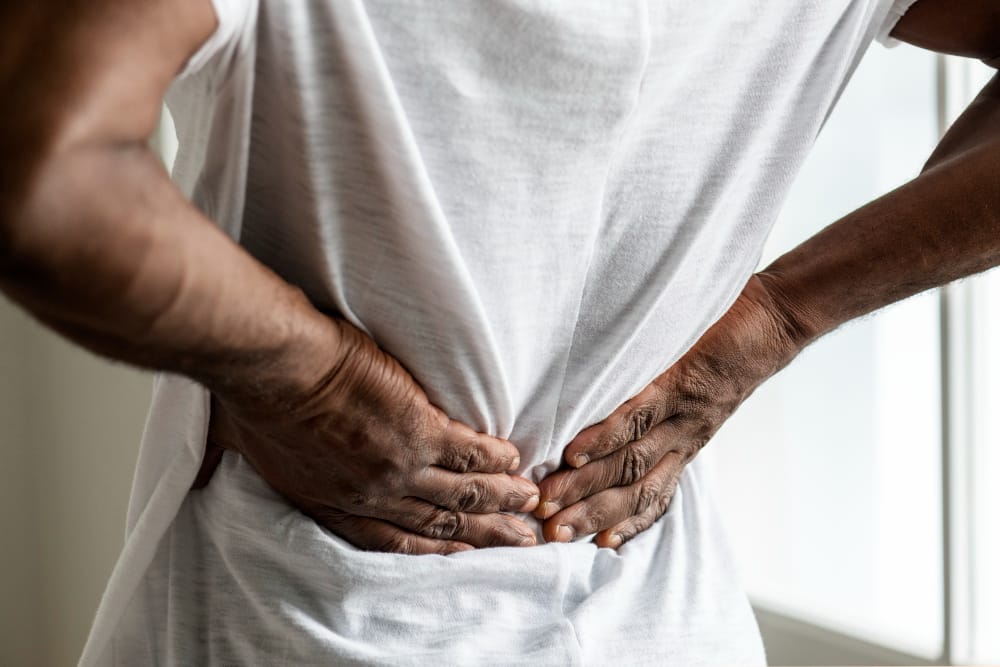
As we get older, our spines naturally go through changes, such as disc thinning, joint stiffening, or reduced flexibility. These changes are a normal part of ageing, but they don’t always mean pain. In fact, many people have these structural shifts without ever experiencing significant discomfort.
At Integrity Physiotherapy, we regularly see older adults who are curious about what’s happening in their bodies. Some notice a little stiffness here and there, while others are worried that new aches must mean something is “wrong.” The good news is that persistent back pain is not an inevitable part of ageing, and there are plenty of ways to keep your spine strong, mobile, and comfortable.
This blog explores how the spine changes with age, why those changes don’t always equal pain, and what you can do to stay active and feel confident in your body for years to come.
Why the spine changes with age (and why that doesn’t always mean pain)
As we age, the structures in our spine naturally go through changes. The vertebral bodies (the main weight-bearing parts of each spinal bone) can show signs of wear, discs may lose some of their height, joints can stiffen, and bones naturally become less dense over time.
These shifts are part of the ageing process (just like getting grey hair or wrinkles) and often occur without causing pain.
Some of the most common structural changes include:
- Disc degeneration – Discs slowly lose some moisture and height, reducing their cushioning effect
- Spinal stenosis – Narrowing of the spinal canal, which sometimes places pressure on nearby nerves
- Osteoarthritis – Natural wear in the spinal joints, which may or may not cause discomfort
- Osteoporotic fractures – Fragility in the bones that can increase fracture risk in some people
- Weakened muscles – A gradual loss of strength if activity levels drop, especially in the core muscles that support the spine
While these changes are considered normal in older age, they don’t always lead to pain. But when combined with other risk factors like sedentary habits, poor posture, or previous injuries, the chance of chronic low back pain increases.
What’s considered ‘normal’ as your back ages?
Not every ache or niggle means something serious is going on. As the spine changes over time, it’s common to feel a little stiffer after sitting for too long, or notice your muscles tiring more quickly after a busy day. These experiences are part of how the body adapts with age and often ease once you get moving again.
Occasional:
- Mild stiffness in the morning that improves as you start your day
- A dull ache after prolonged sitting or standing
- Muscles feeling tired after more activity than usual
…can all be expected from time to time, especially if your activity levels have dropped.
But it’s important to know that persistent or worsening back pain isn’t just a “normal” part of ageing. It’s a sign that your body may need extra support. Many older adults stay mobile and pain-free well into their later years—and proactive movement, strength-building, and early physiotherapy input can make a big difference in preventing pain from becoming a regular feature of life.
Signs your back pain isn’t just age
While some back discomfort is expected with age, certain symptoms suggest there may be something more going on. These signs could indicate an underlying issue that needs further assessment:
- Pain that is sharp, constant, or getting worse over time
- Pain that radiates down the legs or is accompanied by numbness or tingling
- Sudden or severe onset of pain after a minor movement
- Night pain that disrupts sleep or worsens when lying down
- Weakness, balance issues, or changes in bladder or bowel control
- Pain that doesn’t improve with rest or gentle movement
If your symptoms fit this pattern, it’s a good idea to speak with a physiotherapist. Issues like lumbar spinal stenosis, nerve compression, or an osteoporotic fracture can become more common in older age and may require tailored support.
How physio helps you stay mobile and comfortable as you age

como physio treating neck pain
Physiotherapy plays an important role in keeping your body moving well as you get older. By supporting strength, mobility, and confidence, physio helps many people remain active and prevent problems before they start. And if pain does come up, treatment can make movement easier and more comfortable.
At Integrity Physiotherapy, we work closely with older adults to:
- Keep you moving comfortably with tailored exercises that support flexibility, strength, and balance
- Support posture and stability to reduce unnecessary strain on the spine and protect joints and muscles
- Use hands-on techniques when needed to improve joint mobility, ease tight muscles, and make movement feel easier
- Build confidence in your body by encouraging safe, enjoyable physical activity
- Promote long-term independence by breaking the cycle of stiffness and inactivity that can creep in with age
We also understand that how pain feels can be influenced by factors like stress, anxiety, or low mood. That’s why our approach is calm, practical, and focused on helping you feel supported and in control of your health—not just today, but for the long term.
Tips to stay mobile and protect your back as you age
Keeping your spine supported and your body moving well can make a big difference as you get older. Here are some simple, practical strategies that can help you stay active, comfortable, and confident.
Keep moving
Gentle, regular physical activity helps maintain flexibility, strength, and circulation. Walking, swimming, and low-impact strength work are all great options. The key is consistency! A little movement each day goes a long way toward keeping your back healthy.
Prioritise posture
How you sit, stand, and move affects how your spine feels. Small adjustments to posture can reduce unnecessary strain on your joints and muscles. During physio, we can help you tune into these habits and make changes that feel natural and sustainable.
Strengthen your core
Strong core muscles play a big role in protecting your spine and reducing the risk of discomfort. We’ll guide you through safe, tailored exercises that suit your body and activity level.
Use heat or ice for comfort
If you do notice tightness or a flare-up, simple tools like a heat pack or ice pack can help. Heat can relax tight muscles, while ice may reduce irritation—use whichever feels most soothing for you.
Stay connected and supported
Staying active is easier when you feel supported. Talking with your physio, GP, or even family and friends can make a real difference in keeping you motivated and reassured.
Seek support early if pain persists
Occasional stiffness or aches can be part of everyday life, but ongoing or worsening pain isn’t something to ignore. The earlier you seek help, the sooner we can support you to move comfortably again and prevent it from becoming a bigger issue.
Ready to stay active and comfortable as you age?
You don’t have to accept back pain as part of getting older. At Integrity Physiotherapy, we take a personalised, hands-on approach that focuses on movement, comfort, and long-term confidence in your body.
If you’re looking for experienced physio for back pain in South Perth, we’re here to help. Book your appointment today and take the next step toward staying mobile, strong, and pain-free.



